The Châtelaine
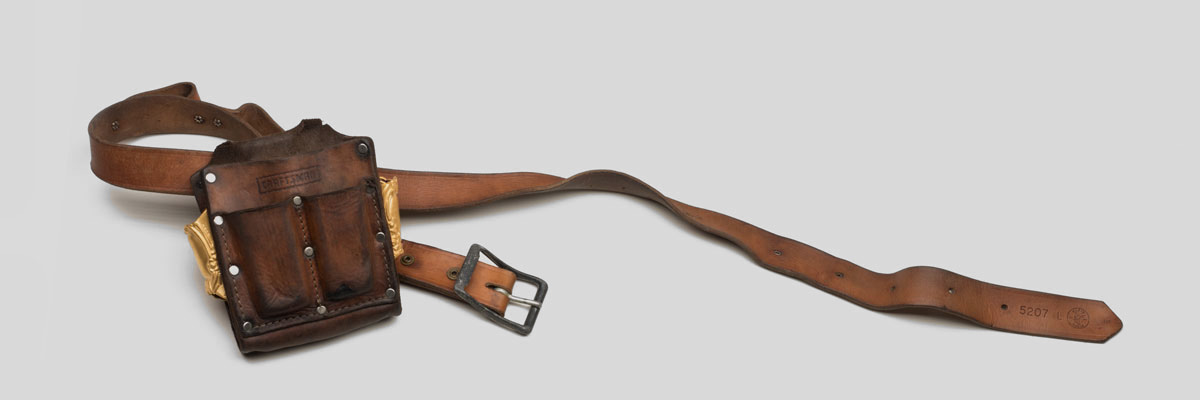
A body of work from 2015-2017
The Châtelaine project was initiated in 2015, one year after Tobias graduated from the Master Program at Ädellab, Konstfack.
The Châtelaine is a continuation of Tobias’ investigation in the culture of the tool belt from a jewellery perspective. The pieces of jewellery in this project are a kind of hybrids between the tool belt of today and a historical piece of jewellery called the châtelaine. They are composed out of fragments of used leather tool belts, combined with gilded silver elements made with repoussé and chasing techniques in a rococo style.
The Châtelaine was exhibited for the first time in January 2016, in a solo exhibition at Galerie Rob Koudijs in Amsterdam.
“I started analyzing the tool belt as if it was a piece of jewellery. I discovered a vibrant culture of body adornment embedded in the structure of misogynist, patriarchal masculinities. Masculinity and jewellery have a complex relationship, filled with fears of breaking norms and socially constructed gender rules. It seems as wearing jewellery poses a threat towards certain masculinities, which is counteracted with different strategies to avoid feminization. One of these strategies is to connect jewellery with practical functionality. Examples of this are the tiepin and the cuff link. Because of this, comparing the tool belt with the châtelaine becomes very interesting. These two objects are both filled with practical functionality (tool), and with symbolic and social functionality (jewellery). Although they are very similar in this aspect, they are interpreted very differently because of their different contexts and gender constructs. By joining the tool belt with the châtelaine, and stating that it is a piece of jewellery, I wish to challenge and question the culture of masculinity that surround me, and contribute to an analysis and a reformation of these detrimental gender structures. I believe that the merging of the chatelaine with the tool belt also open up for a new analysis of the practice of wearing jewellery, in relation to the social structures of masculinity.”
-Tobias Alm
Ward Schrijver about The Châtelaine
October 2009 the gallery showed jewellery by Tobias Alm, who has then just graduated from Ädellab Konstfack, the art academy of Stockholm. This work was all about materials, about phenomena like weight, rhythm, contrast, colour, and connections. Its message, both to the wearer and the observer, lies somewhere between invitation and provocation. In 2012, at Alm’s second exhibition, the emphasis has shifted to a vocabulary of shapes that is familiar to everybody but hardly ever takes center stage: that of tools and utensils. In no way steered by functional aspects, the design plays a intriguing game with form and associations.
During the past years Alm continued his studies in order to obtain his master-degree, which gave him the opportunity to investigate his fascinations more profoundly. He concerned himself not only with the way devices are composed, but also with the social meaning of the things we wear. His point of departure for his final project was the tool-belt, that pinnacle of efficiency and masculinity. As a body-related object (to use the correct jargon) it functions as an identifier and as a sort of jewellery. Even more surprising is the affiliation with a ‘genuine’ traditional jewel, the chatelaine: once a pragmatic key-ring on a housewife’s belt, which in due course developed into a complex and luxurious ornament.
Through this confrontation, codes and meanings quickly accumulated, providing Alm with sufficient inspiration to get to work. In the results his sources are still clearly recognizable: authentic sturdy leather fragments, which are combined with gilded silver elements in a hybrid rococo-style. In combination with Tobias Alm’s already familiar talent for contour and shape, beautifully crafted jewellery pieces emerged that can genuinely be qualified as ‘gender-neutral’.
Ward Schrijver
(© Galerie Rob Koudijs)
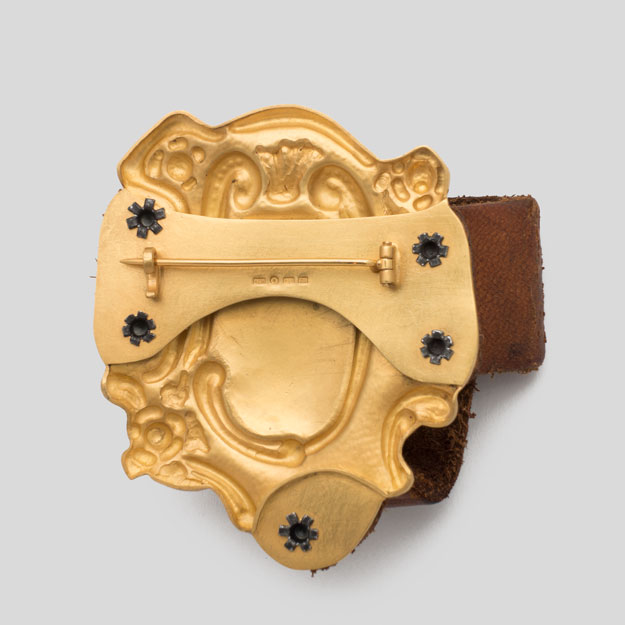
The Châtelaine no
11,
2015
Gilded sterling silver, leather, steel.
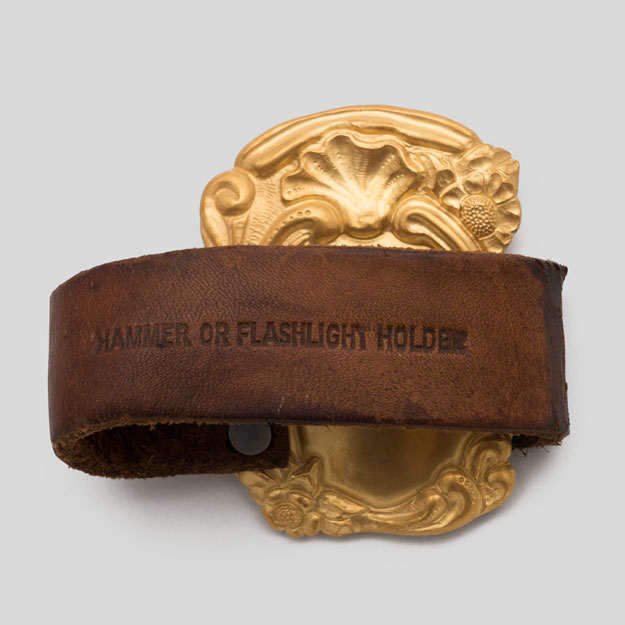
The Châtelaine no
9,
2015
Gilded sterling silver, leather, steel.
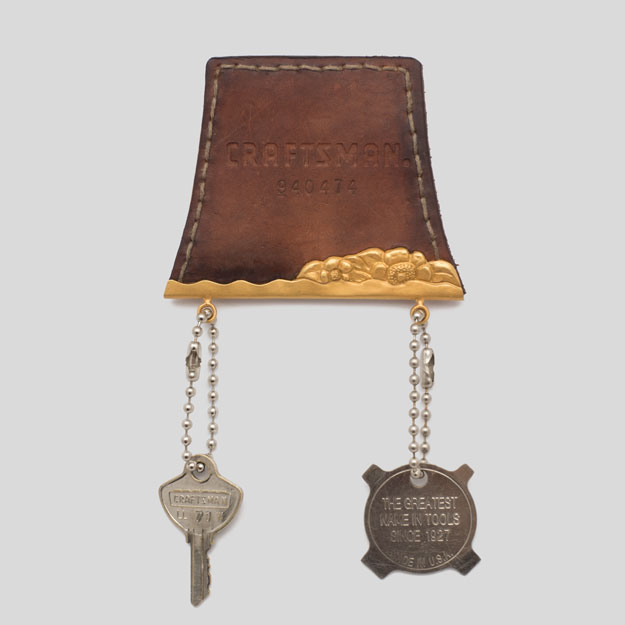
The Châtelaine no
7,
2015
Gilded sterling silver, leather, steel.
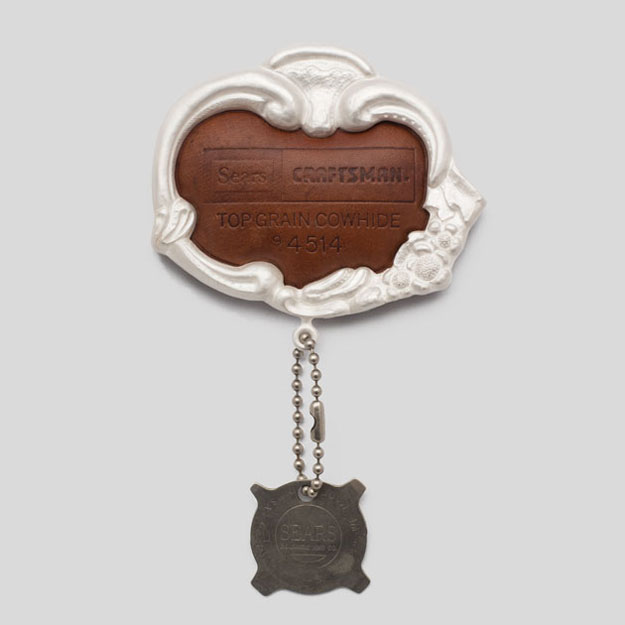
The Châtelaine no
6,
2015
Sterling silver, leather, steel.
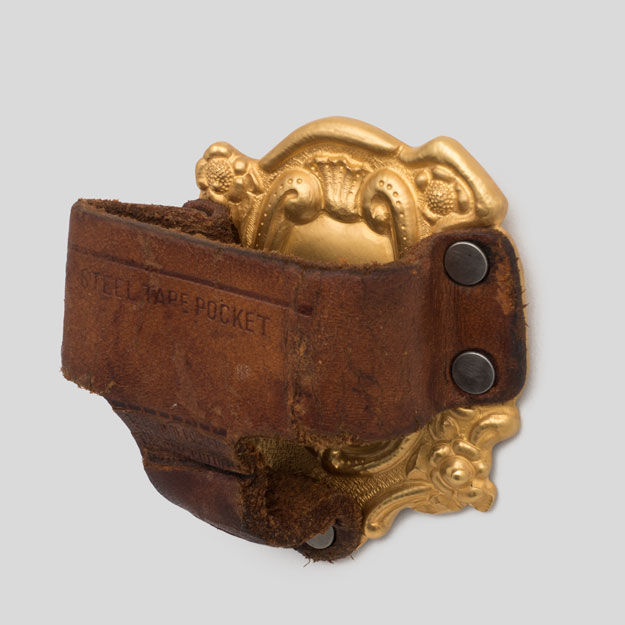
The Châtelaine no
11,
2015
Gilded sterling silver, leather, steel.
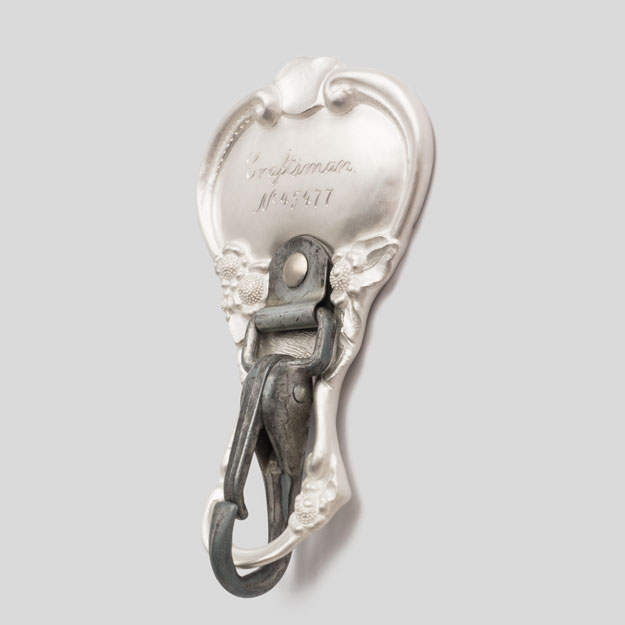
The Châtelaine no
12,
2015
Sterling silver, steel.
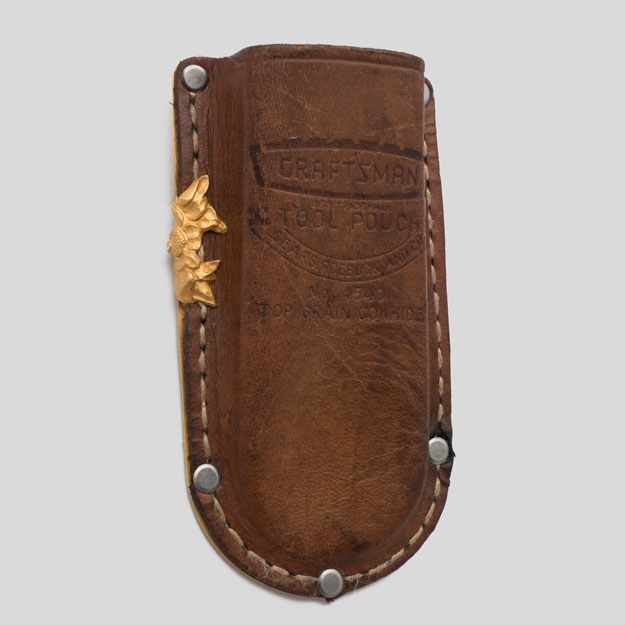
The Châtelaine no
5,
2015
Gilded sterling silver, leather, velvet, steel.
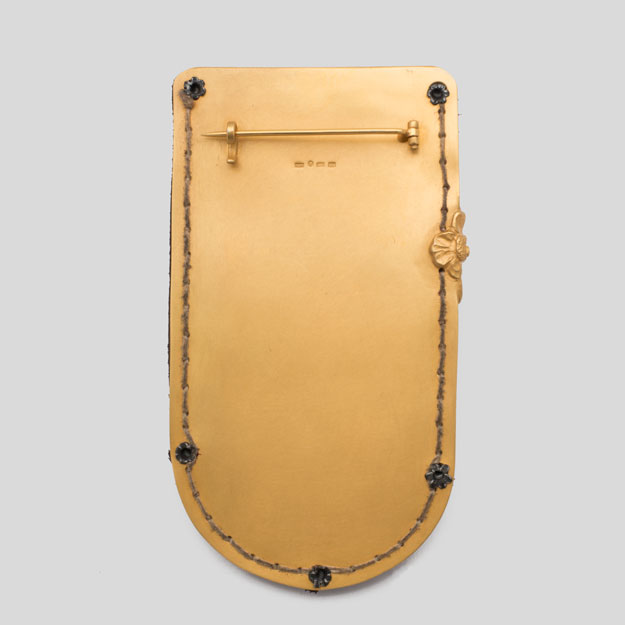
The Châtelaine no
5,
2015
Gilded sterling silver, leather, velvet, steel.
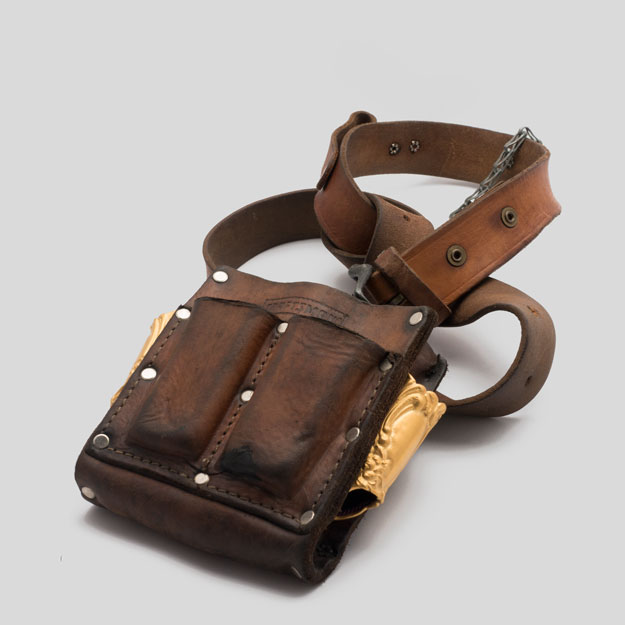
The Châtelaine no 3, 2015 Gilded sterling silver, leather, velvet, steel.
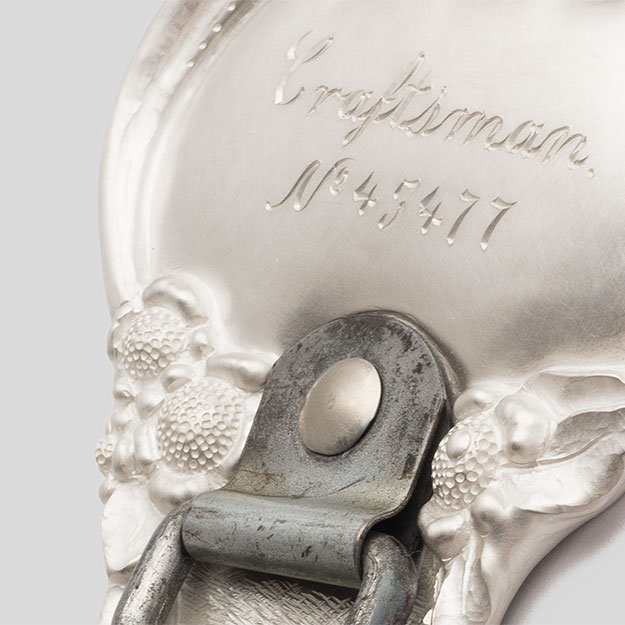
The Châtelaine no 12, detail, 2015 Sterling silver, steel.
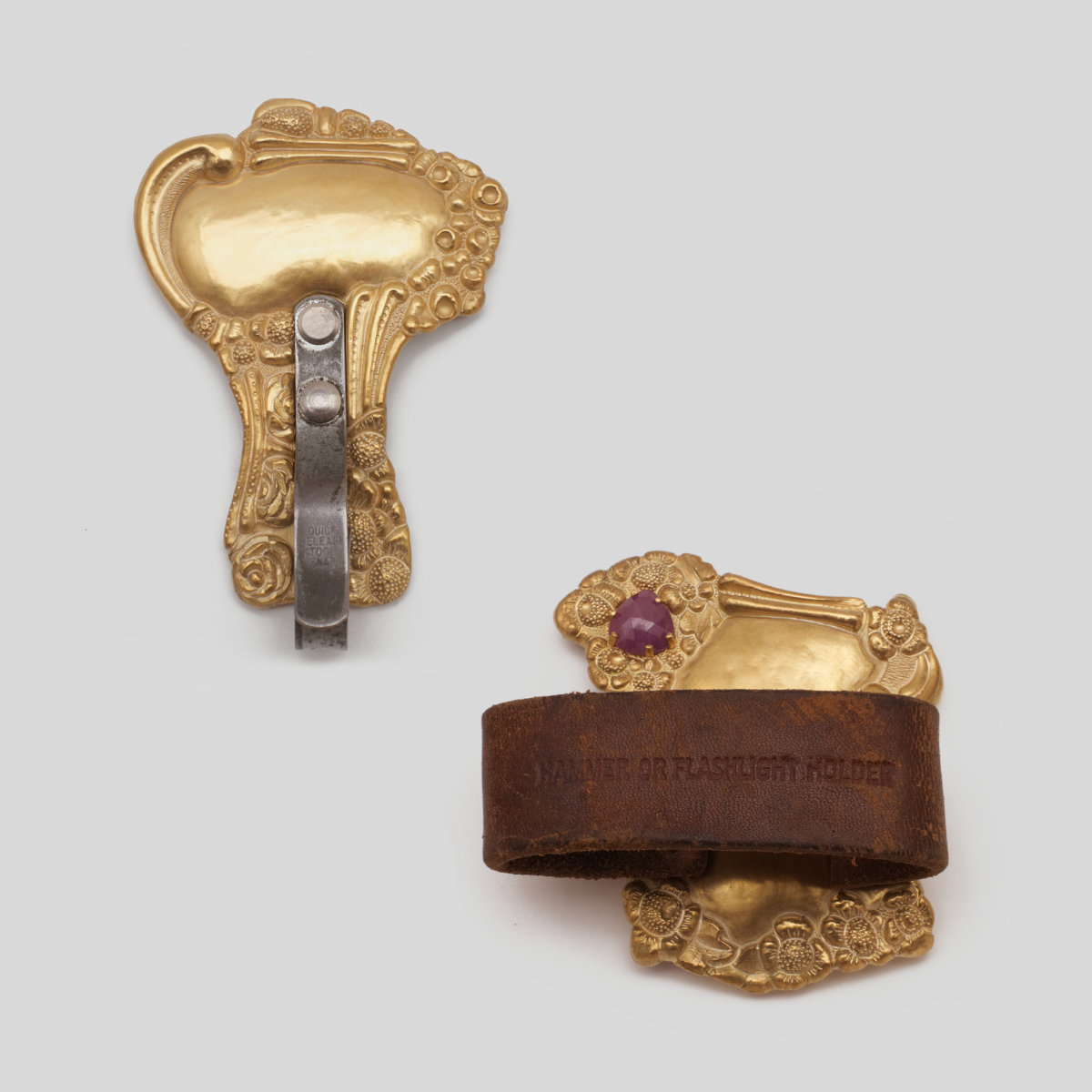
The Châtelaine no 14&15, 2017, Gilded sterling silver, ruby, leather, velvet, steel.
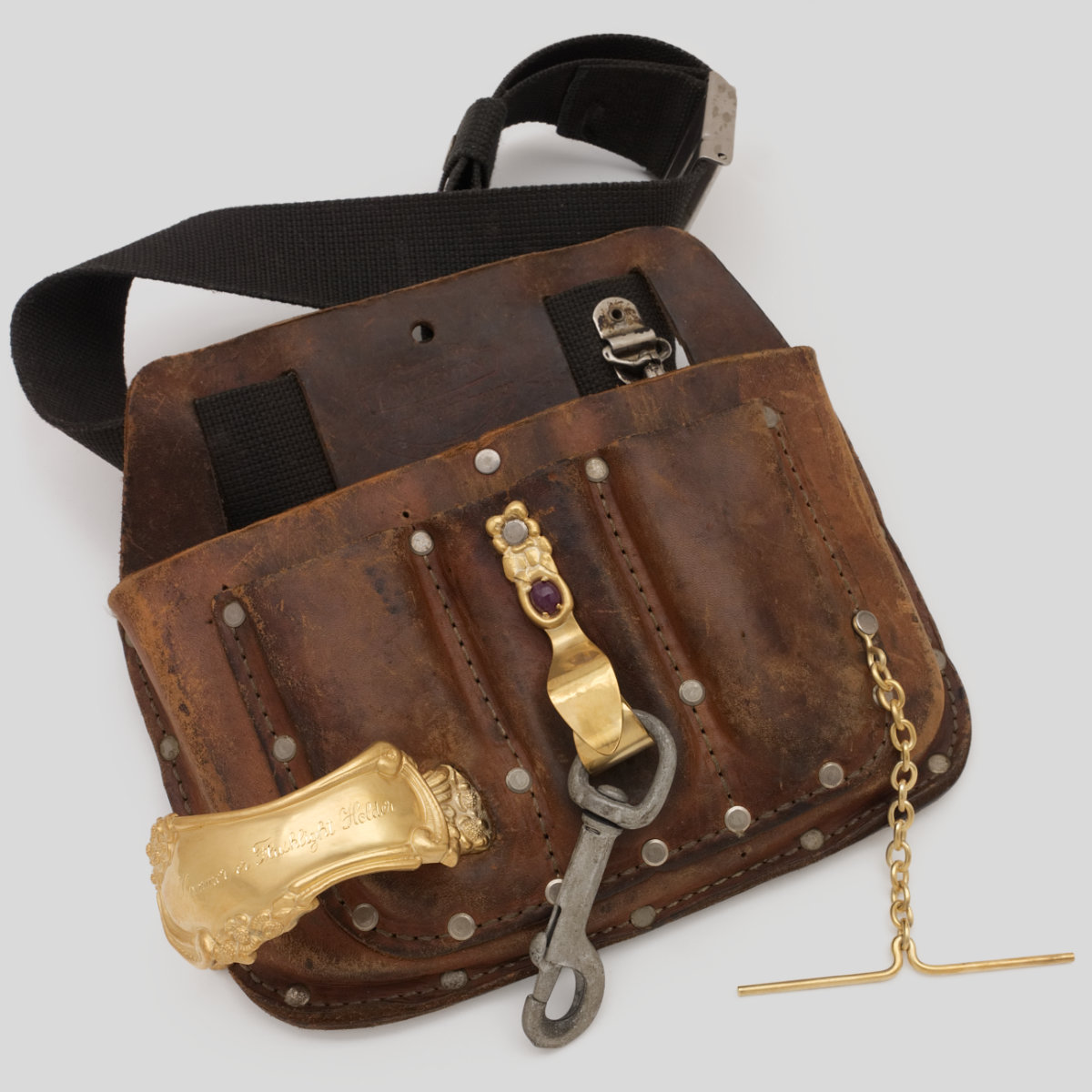
The Châtelaine no 13 (Hammer or flashlight holder), 2017, Gilded sterling silver, ruby, leather, velvet, steel.
The Châtelaine - ett smyckeskonstprojekt
För ca två år sedan introducerades jag till en mycket speciell sorts smycke som kallas Châtelaine, och har sedan dess utforskat dess historia och dess roll i de sammanhang det förekom. Jag insåg snabbt dess nära släktskap med dagens verktygsbälten, vilket ledde mig till att analysera verktygsbältet som smycke. I bärandet av verktygsbälten fann jag en livskraftig kroppsutsmyckningskultur inbäddad i en misogyn och patriarkal maskulintetsstruktur. Detta ledde till en personlig omvärdering och ifrågasättande av både min relation till maskuliniteter och av min roll som smyckeskonstnär och konsthantverkare.
Maskuliniteter och smycken har en komplex relation, full av rädslor för att bryta normer och socialt konstruerade regler. Det verkar som att bärandet av smycken utgör ett hot mot vissa typer av maskuliniteter, och att detta hot måste motarbetas med vissa strategier för att undvika feminisering. En av dessa strategier är att sammankoppla smycket med praktisk funktionalitet. Exempel på detta är slipsnålen och manschettknappen. Med detta i åtanke är det mycket intressant att jämföra verktygsbältet med chatelainen.
En Châtelaine var ett sorts bältesspänne. Den har sett olika ut i olika sammanhang, och dess historia är mycket lång och brokig. Kortfattat kan den beskrivas som en samling verktyg och praktiska objekt hängande i kedjor. Dessa objekt kunde vara allt från sybehör och små psalmböcker till behållare för luktsnus och luktsalt. En Châtelaine var ofta gjord av silver eller guld utsmyckat med ädelstenar eller emaljarbeten, men förekom även i polerat stål. I beskrivningar av chatelainens historia både från dess samtid och vår nutid ligger mycket fokus på dess dekorativa och sociala funktion, och det arkiveras som ett smycke av stora museer som V&A i London och MET i New York.
Både chatelainen och verktygsbältet befinner sig i två världar; de är både praktiskt funktionella verktyg och smycken fyllda med dekorativa och symboliska värden. Trots att de är så lika, tolkas deras roll i samhället väldigt olika, på grund av deras mycket olika kontexter och genusstrukturer. Genom att sammanföra verktygsbältet med chatelainen, och påstå att det är ett smycke vill jag utmana och ifrågasätta den maskulinitetskultur som omger mig, och bidra till en analys och reformation av dessa skadliga genusstrukturer.
Interview in Art Jewellery Forum
“My process is a mix of both theoretical research and personal reflection/scrutinization, combined with material research, and a constant struggle with technical challenges. I try to pay close attention to reaching a high sensitivity in my technical solutions and material compositions.”
Adriane Dalton from Art Jewelry Forum interviewed Tobias Alm about The Châtelaine, and about his solo exhibition at Galerie Rob Koudijs in Amsterdam.
Read the full interview on the Art Jewelry Forum website
The Châtelaine in many exhibitions internationally
Work from this project has been exhibited around the world during the last few years. It has been shown in group exhibitions at Palazzo Mocenigo in Venice Italy, Nationalmuseum Sweden, Gustavsbergs Konsthall Sweden, The Dowse Art Museum New Zealand, Imatra Art Museum Finland, Anciens Abattoirs Mons Belgium, Ateliers de Paris France and Steneby Konsthall Sweden.
More information on these exhibitions can be found on the exhibitions page, and in the CV.